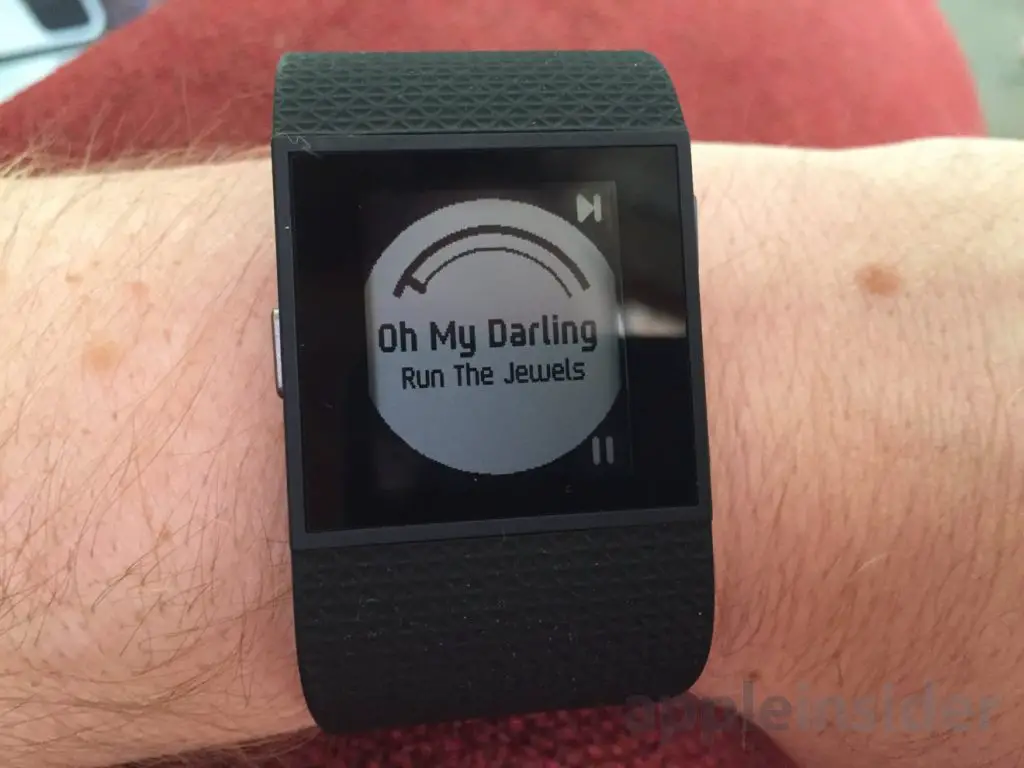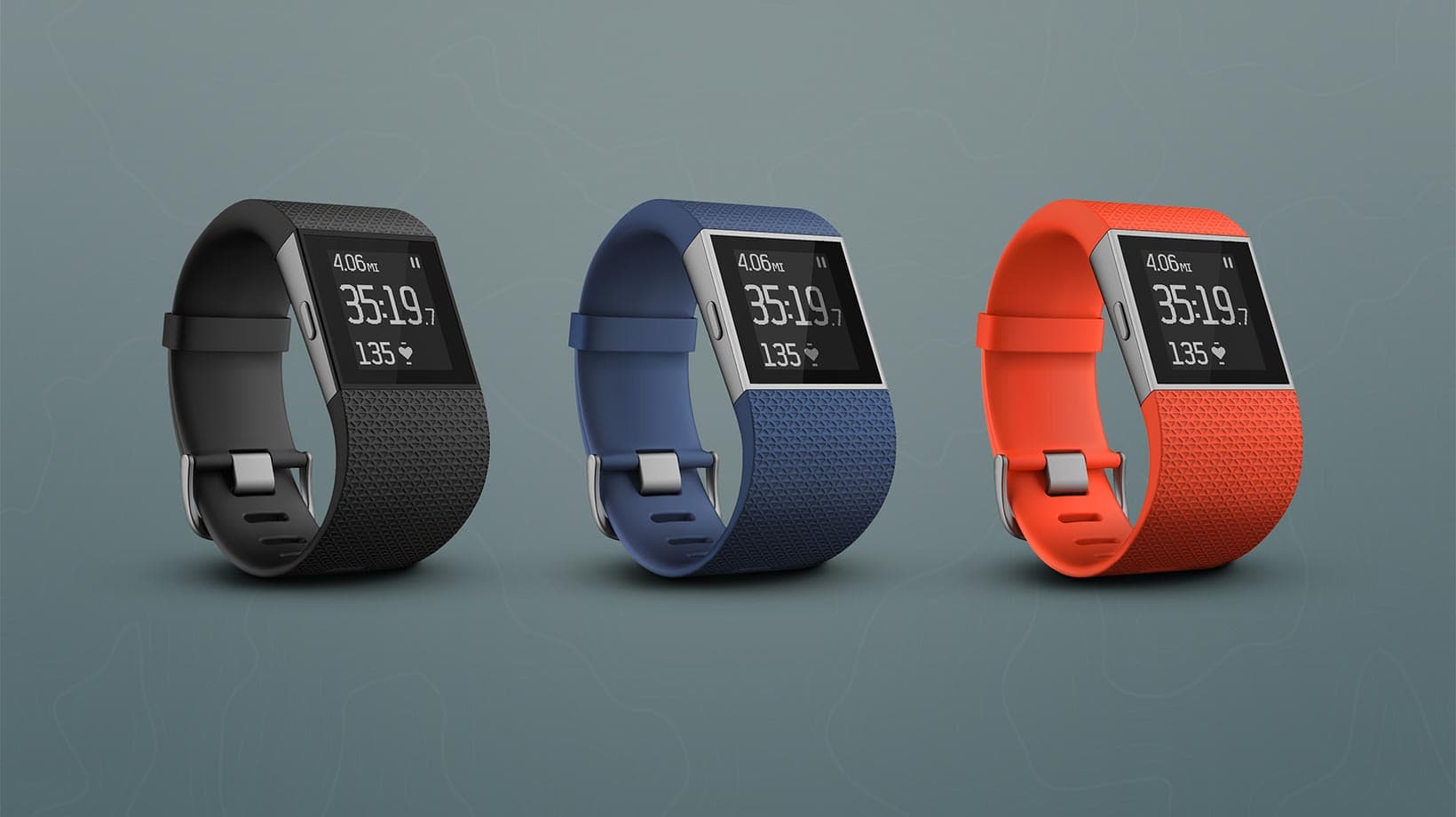Fitness Round the Clock
Who would’ve thought a watch could tear people apart?
By August Wright, College of Charleston
Last year, when my boyfriend turned 29, I gave him a Fitbit Surge exercise watch.
Less than a year later, the strap on his watch started to come apart from the actual watch piece, and he called Fitbit who happily sent him a new one, no questions asked. With a little superglue, patience and some bitching on my end about how he should’ve wiped the watchband down to avoid the Fitbit coming apart, I fixed it.
For $250, we ended up with two Fitbit watches, one sort of broken and the other new. I happily took the old one, which I’m wearing now, still totally intact.
I’ll take a moment here to explain how the Fitbit Surge works. Back in the old days, before watches were also mini-computers, people carried pedometers that counted the number of steps they took. Fitbit basically made pedometers popular again by combining the pedometer, a heart rate monitor and some other nifty features all into one waterproof watch that works really, really well. With the Surge, I can see the time and date, the number of steps I’ve taken in 24 hours, my heart rate (which is 94 right now—don’t worry, that’s normal for me), how many miles I’ve gone, the calories I’ve burned and how many floors I’ve climbed.

All that information is available to me right on my wrist, which is nice because it means I don’t have to carry my phone around or even look at my phone to check my progress. Furthermore, the Fitbit Surge allows me to see text messages, phone calls and even change the music I’m playing through my phone—whether it’s Pandora Radio or iTunes or a YouTube playlist. I can also track my exercise right through my watch by picking the type of exercise and simply hitting the “play” button (from there, Fitbit will track the duration, my heart rate, calories burned, and so on).
The Fitbit app works with the watch via Bluetooth connection, and in the app I can see everything from my watch plus how I slept—yeah, Fitbit monitors how you sleep and can tell you how many times you were restless and/or awake throughout the night. It’s very handy. I can also use the app to track my food/calorie intake, my weight, how many ounces of water I’ve had, etc. So, basically, the Fitbit, and the Surge in particular, sounds like an amazing device. But don’t be fooled. There’s a serious downside to wearing the watch and I’m not talking about the terrible watch tan you’ll inevitably get.
When I first began wearing the Fitbit, I had a lot of ideas about how it would change the way I exercised. I don’t know why, but I really did believe that the Fitbit would somehow—maybe through magic—help me get more reps at the gym or make me lose weight/body fat faster. While it did (and still does) have the positive effect of making me walk around more so I can up my step count, it also has the reverse effect of making me feel like garbage when I’m climbing in bed only to see I’ve got 1,128 steps for the whole day (my goal is 10,000 steps).
The Fitbit Surge, which only comes in black, traffic-cone-orange and light blue, is bulky and doesn’t look pretty. I know that sounds, you know, shallow and probably stupid, but if I’m wearing formal clothes for work or school, or for an evening out, the Fitbit looks weirdly out of place—and frankly, like a man’s watch, especially on my wrist (or any young woman with fairly petite hands and arms).
I don’t want to remove it because I want to track my steps, but I have a lot of other, nicer watches, such as one from Hublot, that I don’t wear. I tried to wear a nice watch on my right wrist and the Fitbit on my left, but I got tired of being called Big Ben and/or Timex, and I hated my matching watch tans. People were also always asking me for the time, and I could never tell who actually wanted to know and who was just teasing.
Okay, maybe the bulky, ugly thing isn’t such a big deal for most men because the Fitbit Surge sort of says, “Look at me! I’m fit!…Or also maybe an Apple Watch, so look at me because I’m outrageously expensive either way!” But then you have another downfall of the Fitbit: the Workweek Hustle.
The Workweek Hustle is a Monday through Friday challenge where friends join each other to see who can get the most steps for the week. A little competition is healthy and fun, except when you and your boyfriend go on a 30,000-step death march on a Friday afternoon in 90°+ heat because you’re both really freaking tired of Brian winning the challenge every single week for the past 15 weeks in a row. By the way, we still lost.
You can also “cheer” other people in the competition whenever they move forward, meet their step goal, win the challenge, and so on. Cheering is great! Except when 10 different people cheer 8 different things and all you see on your phone’s lock screen is notifications from Fitbit that all read: “cheer! cheer! cheer! cheer! cheer!” The cheering is actually so bad within our group that my boyfriend and I will frequently blow up each other’s phones by repeatedly sending the word “cheer!” via text or Fitbit.
There are also badges you can earn by hitting certain milestones, like walking 30,000 steps in a day, or climbing 100 floors, or walking x-amount of miles over the course of however many months. The problem with some of these badges—namely, the stair climbing badges—is that the number of steps that count as one floor seems to change from person to person. For example, my boyfriend and I went to a water park once and we climbed a ton of stairs. We actually climbed the same amount of stairs because we rode all the same rides together.
At the end of the day, I had climbed a total of 113 floors while my boyfriend had only climbed 85.
How that’s possible, we still aren’t sure because we spent the entire day together and climbed the exact same amount of steps. This inaccuracy eventually led my boyfriend to declare that my Fitbit was off and therefore I didn’t deserve my badge—a feeling that was only intensified when, a few hours later, our Workweek Hustle group saw the badge and cheered it. Repeatedly.
If you’re someone who doesn’t count your sleeping hours because you’ll feel more tired if the hours are very low (this is me), the Fitbit will exhaust you. It doesn’t count those “restless” times as time spent asleep. You can sleep for seven hours, for example, but maybe 40 minutes of those seven were spent restless, so, really, you only got about six.
And beware the Weekend Warrior challenge—it’s the Workweek Hustle, but for the weekend. You’ll undoubtedly make a friend who begins the challenge, invites you, and you join because you don’t know that said friend is going on a 2-day, 100k run with lots of other physical shit involved, thereby ruining your weekend plans of sitting on the couch and eating/sobbing into an entire family-sized apple pie.
But seriously—nothing is less motivating than having someone invite you to a step challenge when you both know that their plan is to go for 200,000 steps, and your plan is to see how much butter you can fit into your mouth while trying to find an outfit that helps you blend in with the couch a little better.
Your Fitbit will also enjoy telling you when you haven’t met your exercise goal for the week, or step goal for the day, or sleep goals, or your calorie goal, and so on. The days when you do hit those goals, you feel pretty good about yourself.
But on those other days—or sometimes weeks—when you’re pretty inactive, Fitbit is the first one to let you know just how much of a lazy, couch-blending slob you’ve been.
I still wear my Fitbit, and I always recommend that people buy a Fitbit because it really does help you keep track of your activity. Just beware of the watch tan, the cheers, and the friends who’re a little—or a lot—more motivated than you.









